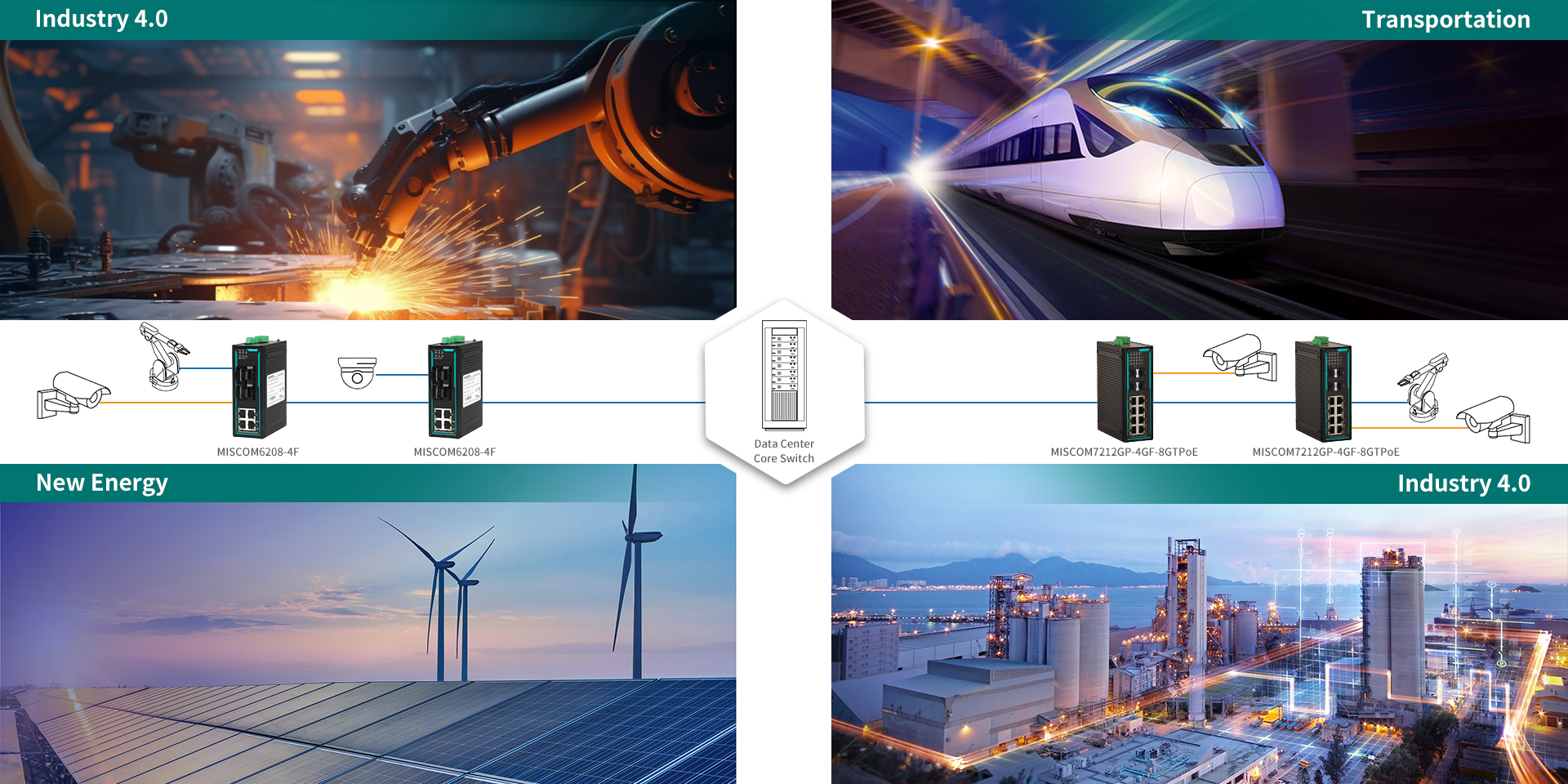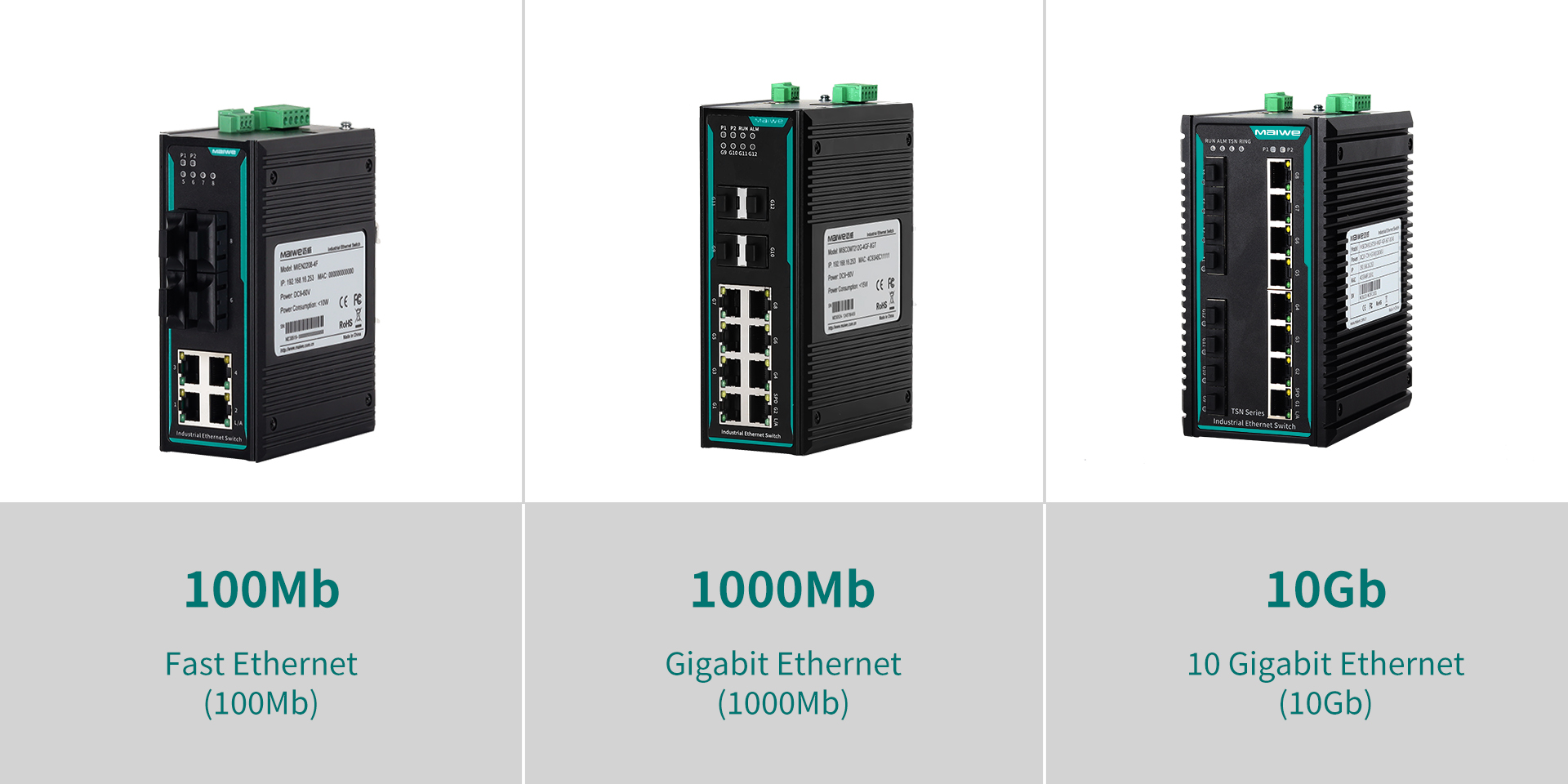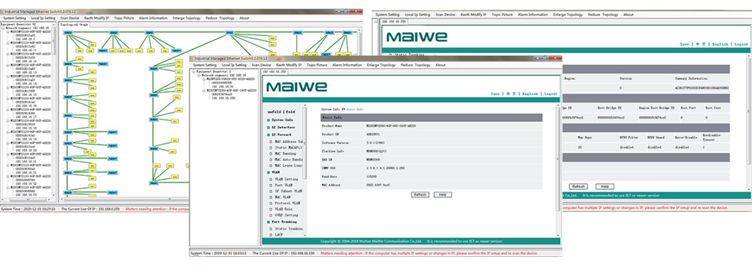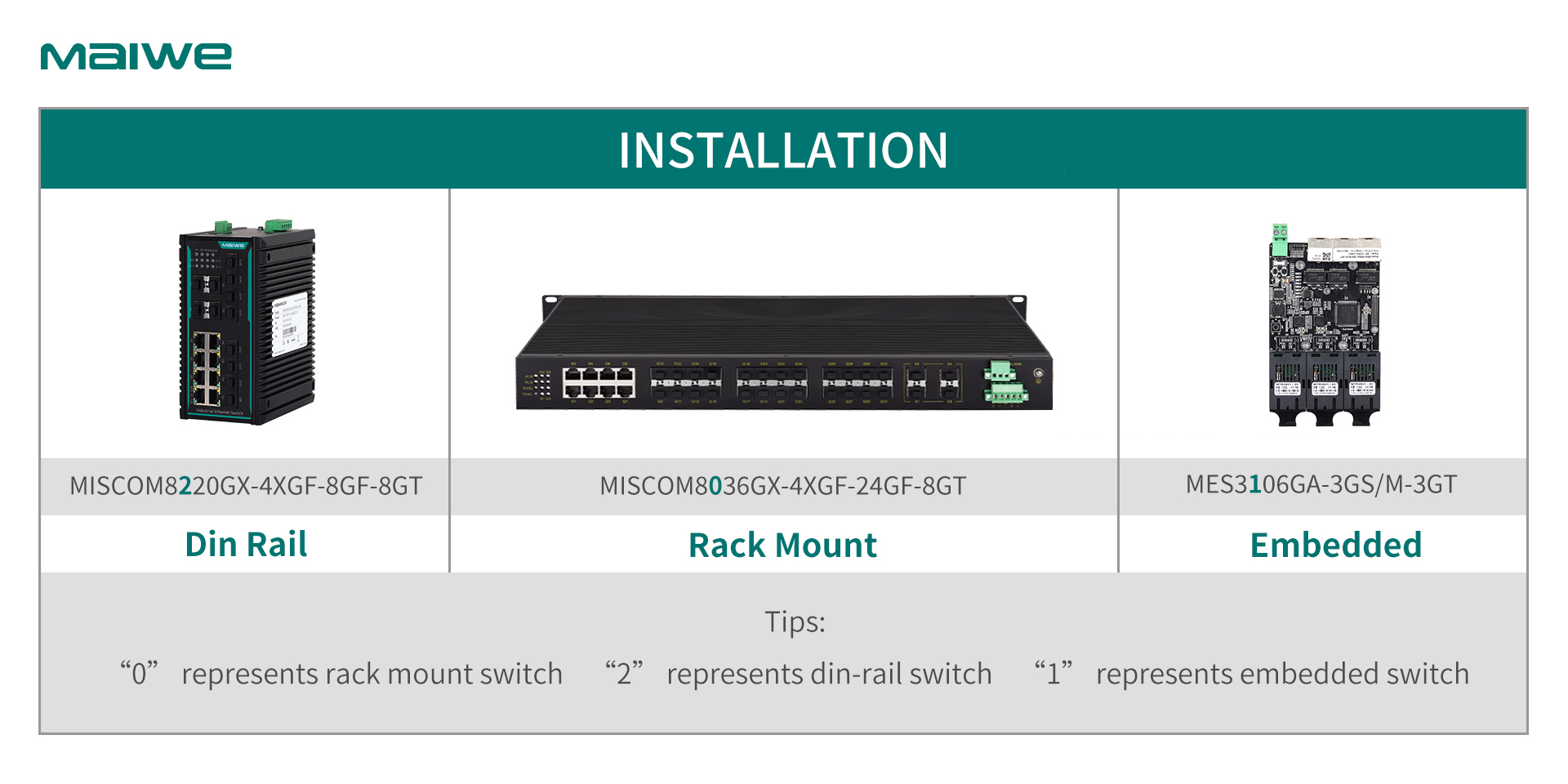How To Choose The Right Industrial Switch in 2024
As industries experience a growing demand for robust and efficient industrial connectivity solutions, there is a lack of easily accessible and comprehensive information on industrial switches. Crafted from onsite practical experience, our guide aims to help businesses and professionals avoid costly mistakes associated with choosing the wrong industrial switches, which could lead to operational disruptions, inefficiencies, or increased maintenance costs.
What Is The Industrial Network Switch
First and foremost, what is a network switch? The network switch is the device that efficiently manages data traffic within local area network, while a hub simply broadcasts data to all connected devices(half-duplex), and a router directs data between different networks. And industrial switches are specialized network switches designed for robust performance in demanding environments such as manufacturing facilities, outdoor installations, and industrial settings. Unlike regular commercial switches, industrial network switches are built to withstand harsh conditions, including temperature variations, vibrations, and electromagnetic interference. These switches often feature durable materials, advanced cooling mechanisms, and additional port types, making them suitable for diverse operational contexts. By understanding the unique characteristics and functionality of industrial switches, individuals can make informed decisions when selecting the right switch for their specific needs of industries like manufacturing, energy, transportation, and more.

8 Factors to Consider When Buying Industrial Switches
Layer Protocol of Industrial Switch
Different layers in the OSI model (Open Systems Interconnection) serve distinct functions. Confirming the layer protocol ensures that the switch is suitable for the intended network functionality, whether it's basic connectivity (Layer 2) or involves routing and complex networking tasks (Layer 3).
Layer 2 switch operates at the data link layer of the OSI model and is used to transfer data between devices on the local area network. Layer 3 switches are responsible for facilitating communication between different networks. It operates at the IP level and is primarily concerned with routing packets of data across multiple networks to reach their intended destination. Here we collect a few common applications for different industries.
| Layer 2 Industrial Switch | Layer 3 Industrial Switch | ||
| Industry 4.0 |
|
Remote supervision and management of processes and production lines. Implementation of industrial Ethernet networks to improve efficiency and monitoring. |
|
| Transportation |
|
Traffic control and intelligent signage. Network management for vehicle fleets and logistics. |
|
| Energy Plant |
Monitoring and control of energy distribution networks. Integration of smart meters and energy management systems. |
Communication between power generation and distribution devices. Implementation of smart grids for efficient energy management. |
Port Speed of Industrial Switch
Choosing the appropriate switch port speed—whether it's 100 Mbps (Fast Ethernet), 1 Gbps (Gigabit Ethernet), or 10 Gbps (10 Gigabit Ethernet)—is crucial for ensuring optimal data bandwidth and meeting the specific requirements of your business operations. The decision should align with your business needs, taking into account the volume of data traffic and the speed demands of your applications.
- 100 Mbps (Fast Ethernet): Suitable for basic networking needs with moderate data transfer requirements. Commonly used in smaller networks where high-speed data transmission is not the primary focus.
- 1 Gbps (Gigabit Ethernet): Offers significantly faster data transfer compared to Fast Ethernet. Ideal for businesses with increasing data demands, supporting activities such as file transfers, video streaming, and larger-scale data processing.
- 10 Gbps (10 Gigabit Ethernet): Geared towards high-performance environments with substantial data traffic. Best suited for large enterprises, or industries with demanding applications, such as high-definition video editing or data-intensive processing.

When selecting switch ports, it's essential to assess the current and future data needs of your network. This consideration ensures that your chosen switch speed can effectively handle the bandwidth requirements of your business applications, contributing to a seamless and efficient networking infrastructure. Maiwe offers multiple 100MB, 1GB and 10GB switch series, and there are also mixed port speed options, enough for your current project, but plan for the future and consider extra bandwidth.
Port Quantity of Industrial Switch
The number of ports available on your network switch is essential because it determines the number of devices that can be connected to it. A network switch can accommodate from 4 to 64 ports. In order to choose the switch that best suits your requirements, you will need to determine how many devices you are going to connect and whether this number is likely to change in the short to medium term.
How many ports do you need in a switch? Maiwe provides a growing product portfolio ranging from 4 port industrial switch to 52 port industrial switch.
Port Types of Industrial Switch
When talking about industrial switch port types, it's essential to consider more than just the broad distinction between fiber and copper ports. The nuanced factors include the fiber design characteristics of single mode and multimode, as well as the connectors, such as LC, SC, and ST.
Maiwe offers diverse switch port combinations for the flexibility, including full fiber ports, full copper ports, or a mix of fiber and copper options. If you're considering fiber ports, take a moment to delve into the specific fiber types and connector options outlined below.
- Fiber Types:
- Single Mode (SM): Ideal for long-distance transmissions, single-mode fiber uses a single light signal and is suitable for extensive industrial networks requiring high bandwidth over extended distances.
- Multimode (MM): Suited for shorter-distance connections within industrial settings, multimode fiber utilizes multiple light signals, offering a cost-effective solution for networks covering moderate distances.
- Connector Types:
- LC Connector: Known for its compact design, the LC (Lucent Connector) is favored for high-density installations. Its push-pull mechanism ensures secure connections, making it a popular choice in industrial environments where space optimization is crucial.
- SC Connector: With a square-shaped, snap-in coupling mechanism, the SC (Subscriber Connector) provides stable connections. Its robust design makes it suitable for harsh industrial conditions, ensuring reliable performance.
- ST Connector: Featuring a bayonet-style coupling, the ST (Straight Tip) connector is easy to install and remove. While slightly larger than LC and SC connectors, ST connectors offer durability, making them suitable for industrial applications with moderate space availability.
- FC Connector: The FC (Fiber Connector) employs a screw-type coupling mechanism, ensuring a secure and stable connection. Widely used in industrial settings, especially where vibration or movement is a concern, FC connectors provide reliable performance in demanding environments.

Managed vs Unmanaged Industrial Switch
Unmanaged switches, being plug-and-play devices, are ideal for simpler setups where basic connectivity is the primary need. The unmanaged industrial switches are straightforward to deploy and operate, making them a suitable choice for smaller networks, or scenarios where minimal configuration is sufficient. On the other hand, managed switches provide a more robust solution for businesses with advanced networking needs. The ability to configure settings through a web-based interface or command-line interface (CLI) offers enhanced control over network performance, security, and optimization. Managed switches are the preferred option when dealing with larger-scale deployments, intricate network architectures, or projects demanding specific configurations, redundant ring function, virtual LANs (VLANs), Quality of Service (QoS), and other advanced features. Ultimately, the decision between unmanaged and managed switches depends on the scale, complexity, and customization requirements of your network environment.
Maiwe provides a wide range of unmanaged industrial switches, and managed industrial switches that support advanced features and user-friendly management software.

PoE vs Non-PoE Industrial Switch
Power over Ethernet (PoE) uses existing network cables to power connected devices, such as VoIP phones, wireless access points and surveillance cameras. If you need this functionality, look for a switch that supports PoE. A non-PoE Switch, as the name suggests, cannot transmit/deliver any power to the devices. All the devices that we connect to a non-PoE Switch must also have a separate power supply. Therefore, make an assessment to know whether you need the capability to power devices before buying. If the answer is “yes”, make sure the power per port (in watts) and the total power budget of the PoE ports meet the needs of your electronic devices.
Mounting Options Based on Industrial Environment
Industrial ethernet switches usually come in three installation options, that is, rack mount, DIN rail mount, and embedded choice. By choosing the right mount type, it can provide the appropriate ease of use and accessibility for your application needs.
Rackmount switches are ideal when you want to integrate it into a new or existing server room or standard 19-inch equipment rack, for a more organized and centralized network setup. Embedded switches cater to applications where seamless integration into machinery or equipment is paramount. This makes them ideal for underground mining and automation systems where space is at a premium. The DIN-rail mount option further enhances their adaptability, allowing for quick and straightforward, secure and efficient installation in industrial settings, such as control panels and cabinets.

Maiwe offers a range of switches with distinctive mounting options easily identified by the second digit in the product name. For instance, 0 denotes a rack-mount switch, 1 signifies an embedded switch, and 2 represents a din rail switch.
Power Supply of Industrial Switch
Industrial switches often adopt the wide voltage input which increases the device's durability and reduces the risk of damage caused by unstable power sources. They also come in single power design and dual power switch design. Selecting between a single power and dual power industrial switch depends on the criticality of your network's reliability and the level of redundancy required.
A single power industrial switch is suitable for less mission-critical applications or scenarios where redundancy is not a top priority. In situations where occasional downtime is acceptable and cost efficiency is crucial, a single power configuration may suffice. On the other hand, for mission-critical environments demanding continuous operation and minimal downtime, a dual power industrial switch is the preferred choice. Dual power switches offer power supply redundancy, ensuring uninterrupted operation even if one power source fails. This configuration enhances the reliability and availability of the network, making it a crucial choice for applications where consistent connectivity is paramount.
Conclusion
The form factor that you choose will come down to the switch’s application. When deciding which industrial network switch to choose, carefully evaluate the reliability needs of your network to make an informed decision based on your specific requirements. Maiwe provides a growing product portfolio ranging from 4 port industrial switch to 52 port industrial switch, unmanaged switch and managed switch, poe switches.





















 Pre
Pre
 Back to list
Back to list